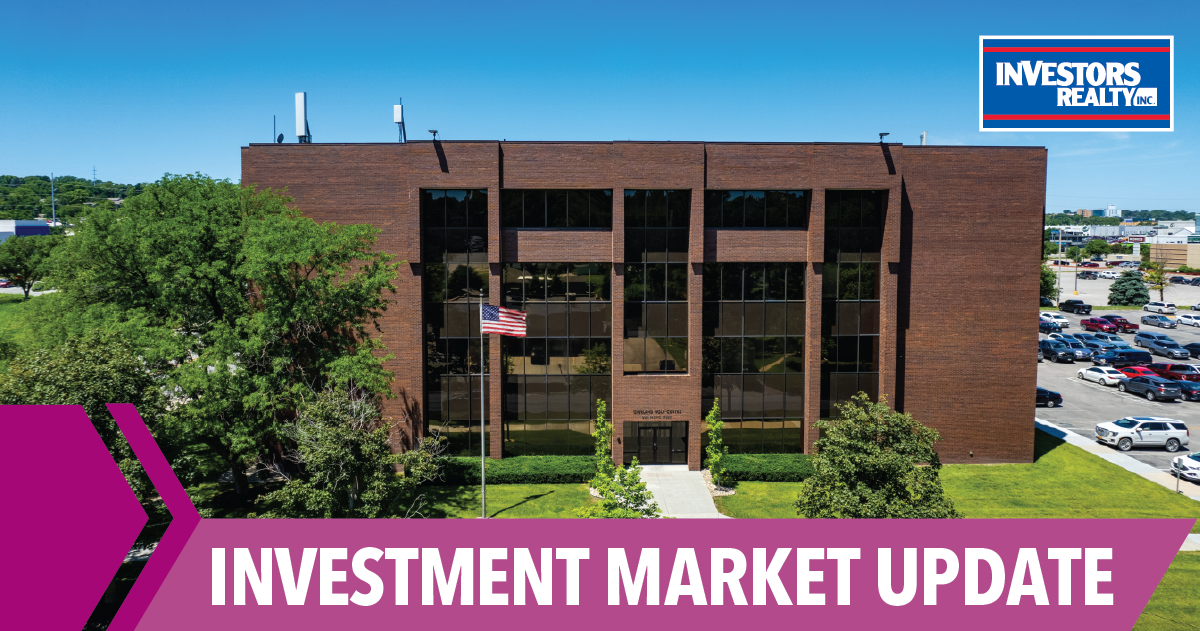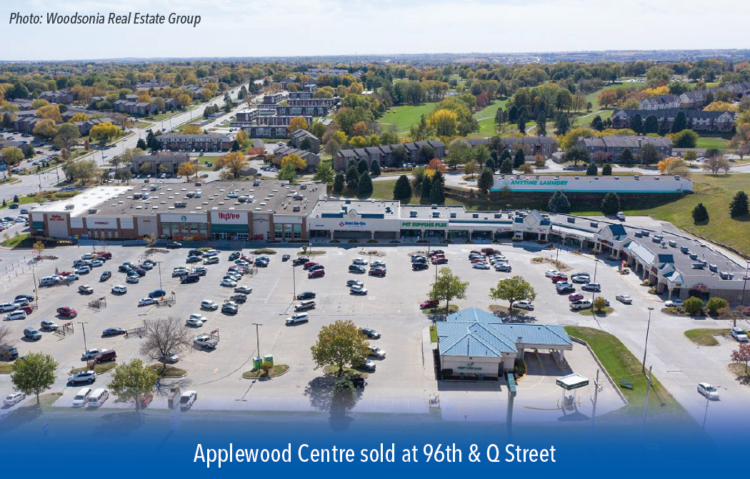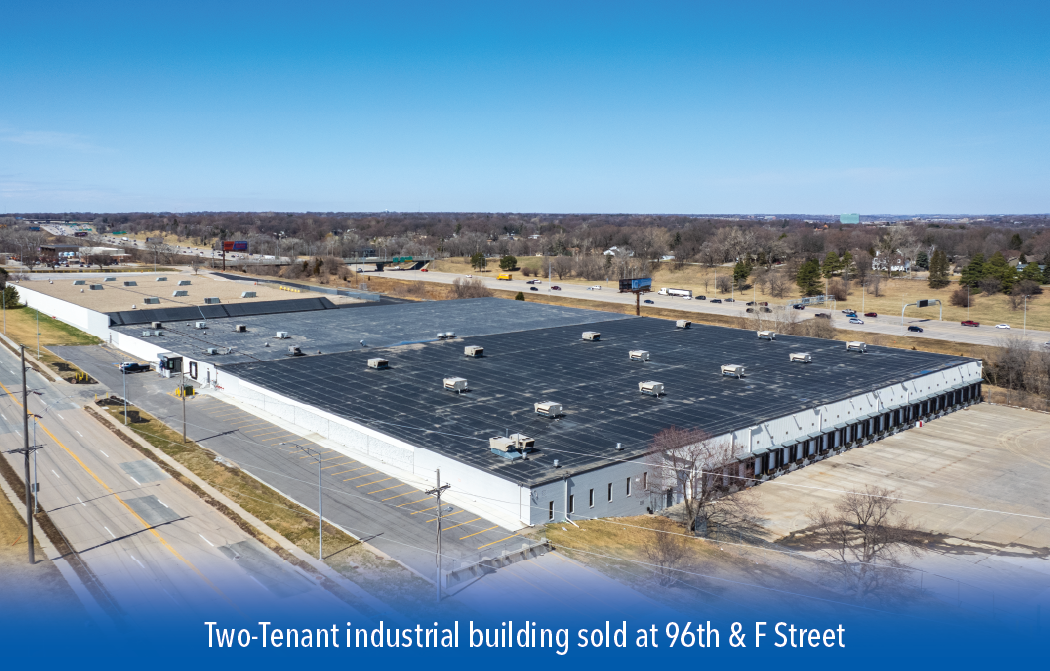In 2022 the investment property market in Omaha was dominated by the sharp rise in interest rates commencing in the second quarter. Borrowing costs nearly doubled compared to the fourth quarter of 2021, and most of the sales for the year involved rates that were locked earlier in the year with rate locks burning off by the end of the third quarter.
One characteristic of the 2022 investment market was the large volume in retail sales, led by a local investor that transacted seven shopping centers into an UPREIT, with a total portfolio value of $57,850,000.
2022 NOTABLE RETAIL SALES
PROPERTY | PRICE |
| Dakota REIT Portfolio 7 Shopping Centers | $57,850,000 |
| One Pacific Place Shopping Center 103rd & Pacific Streets, Trader Joe’s anchored | $34,000,000 |
| Shoppes at Grayhawk 144th & Maple Street | $23,600,000 |
| Kohl’s/Aldi/Cavender’s 72nd & Pacific Street | $21,450,000 |
| Applewood Centre SEC 96th & Q Street | $17,200,000 |
| Shops at Southport 12744 Westport Parkway | $8,240,000 |
| Crossroads Corner Shopping Center 72nd & Dodge Street | $7,375,000 |
OTHER NOTABLE SALES
PROPERTY | PRICE |
| 9202 F Street Two-Tenant Industrial Building | $22,500,000 |
| Papillion Family Hospital | $21,460,000 |
| SalonCentric Distribution Center | $18,000,000 |
| Westroads Point Office Building | $8,000,000 |
| Overland Wolf Office Building | $8,000,000 |
New transaction volume has softened significantly as lower interest rate locks burn off. Buyers are no longer able to make 2021 cap rates work and are passing on deals that previously would have garnered strong interest. In general, cap rates have not reset to higher levels and sellers have been slow to adjust their pricing. There is still strong demand from individual investors primarily based on the west coast. Many of them are paying cash or have alternate sources of financing that allow them to be aggressive. To some extent, we have seen these buyers prop up the market. This is true particularly in lower price ranges dominated by individual investors. Buyers that require traditional financing are not able to compete with this group, which creates two markets: the individual investor market where cap rates have not changed significantly, and the professional investor market where cap rates have moved up, but little is actually trading. Ultimately, we expect to see capitalization rates rise across the board if interest rates remain at current levels.
This article appeared in our company newsletter in December of 2022. Please click here to download the entire newsletter.




